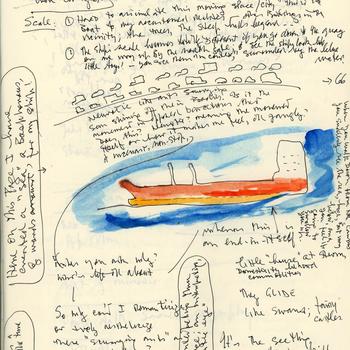READING READING: IL/LEGIBLE. Exploration
Reading is an everyday and, at the same time, strange, sometimes even magical practice. We commonly understand it as a mental technique that involves the visual recognition of written signs, the actualisation of the sound image of words and the comprehension of their meaning. Reading is one of the fundamental cultural techniques of modern societies: Once learned, reading in writing cultures modulates our relationship to ourselves and the world; it creates connections across time and space and is a site of society's self-understanding. However, reading is essentially a black box that is difficult to fully apprehend: The act of successful reading is so automatic for literate users of writing that it is almost impossible to distinguish between seeing the forms of the written signs and deciphering them, between what is written and what is read (Polaschegg 2018; Aeberhard 2018).
As part of the project READING READING, the format IL/LEGIBLE responds to this difficulty by approaching reading from its absolute limit: the unreadable. The illegible exposes – albeit in the negative – the fundamental promise of writing to communicate, as well as its character as a potentiality dependent on actualisation by a reader. Thus, it makes reading as an aisthetic and semiotic practice accessible to reflection in a special (and peculiar) way (Müller-Tamm et al. 2018). Thirteen scholars from the fields of literary studies, anthropology, philosophy and cognitive ethnology, as well as writers, visual artists, sound poets and translators have been invited to interrogate the practice of reading from their respective points of vantage. Their reflections depart from an object of observation that presented itself as text or writing, thus seemingly asking to be read, but that could not be processed in the usual sense – because the sign system used had not been learned, because it consisted of an unknown code or turned out to be something only similar to writing. Focusing on the fringes and margins of reading, each of the participating artists and scholars began to explore the practice not only as an automatic process of deciphering signs, of searching for and assigning meaning, but as a decidedly aesthetic practice, i.e. (after Reckwitz 2016) one that is not instrumental but self-referential in sensory perception, poetic and/or performative, affective, interpretive, as well as experimental, transgressive and thus potentially political.
With: Jessica Barr · Charlotte Coch · Ulrike Draesner · Angélica Freitas · Raisa Inocêncio Ferreira Lima · Elias Kreuzmair · Karolin Meunier · radical data · Michael T. Taussig · Nhã Thuyên · Kinga Tóth · Sarah Bro Trasmundi · visual intelligence
Concept and Organisation: Barbara Bausch, Research Area 4: "Literary Currencies"
